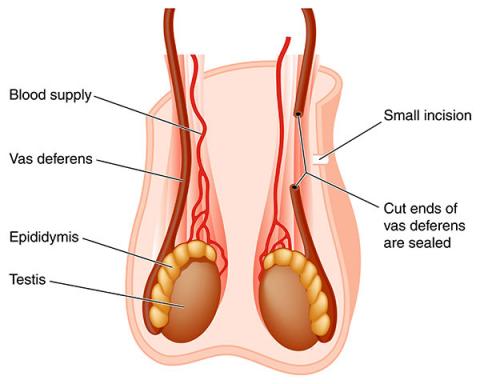What is a Vasectomy?
A vasectomy is an operation that removes a small section of the vas (hence the name). The vas is the tube by which the sperm exit the testis to join the semen. It is the main form of male sterilisation.
It is important to note it has no effect on the ability to have an erection and semen is still ejaculated at orgasm – there are just no longer any sperm present within the fluid.
There are 3 important considerations of which you should be aware:
-
You need to regard vasectomy as permanent and irreversible.
-
You need to continue some form of contraception until a negative semen analysis is achieved.
-
There is a failure rate – though very low at < 1%.
What Happens During the Procedure?

Vasectomy is performed under a light general anaesthetic in this practice.
A single small incision is made in the scrotum under the penis (occasionally two are required). The vas on each side is then:
-
Identified.
-
Divided – and a small segment removed.
-
Ligated – tied off with a suture.
-
Cauterized.
-
Buried – to place surrounding tissue between the two ends of vas.
The wound is closed with a dissolving suture. You may shower but do not soak in a bath or go swimming for about a week after the procedure.
After the Procedure
-
Avoid heavy exercise for about a week.
-
You may resume intercourse whenever you feel comfortable to do so.
-
Continue some form of contraception until the negative sperm count is achieved – 90% of men do so by 6-8 weeks.
Possible Side Effects
Occasional
-
Bruising and swelling in the scrotum. A cold pack to the area can minimise the effect.
-
Testicular discomfort – usually settles quite rapidly. This can be alleviated with good scrotal support e.g. wearing 2 pairs of “jockey” underwear.
Uncommon
-
Wound infection.
Rare
-
Persistent pain in the scrotal area.
-
Development of a painful epididymal cyst.
